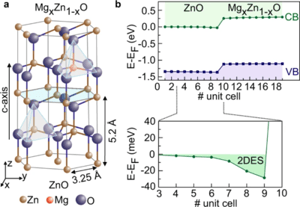PRESS RELEASE
- Research
- 2021
Interplay of spin–orbit coupling and Coulomb interaction in ZnO-based electron system
Authors
D.Maryenko, M. Kawamura, A. Ernst, V. K. Dugaev, E. Ya Sherman, M. Kriener, M. S. Baharamy, Y. Kozuka, and Masashi Kawasaki
Abstract
Spin–orbit coupling (SOC) is pivotal for various fundamental spin-dependent phenomena in solids and their technological applications. In semiconductors, these phenomena have been so far studied in relatively weak electron–electron interaction regimes, where the single electron picture holds. However, SOC can profoundly compete against Coulomb interaction, which could lead to the emergence of unconventional electronic phases. Since SOC depends on the electric field in the crystal including contributions of itinerant electrons, electron–electron interactions can modify this coupling. Here we demonstrate the emergence of the SOC effect in a high-mobility two-dimensional electron system in a simple band structure MgZnO/ZnO semiconductor. This electron system also features strong electron–electron interaction effects. By changing the carrier density with Mg-content, we tune the SOC strength and achieve its interplay with electron–electron interaction. These systems pave a way to emergent spintronic phenomena in strong electron correlation regimes and to the formation of quasiparticles with the electron spin strongly coupled to the density.
Nature Communications : https://www.nature.com/articles/s41467-021-23483-4

